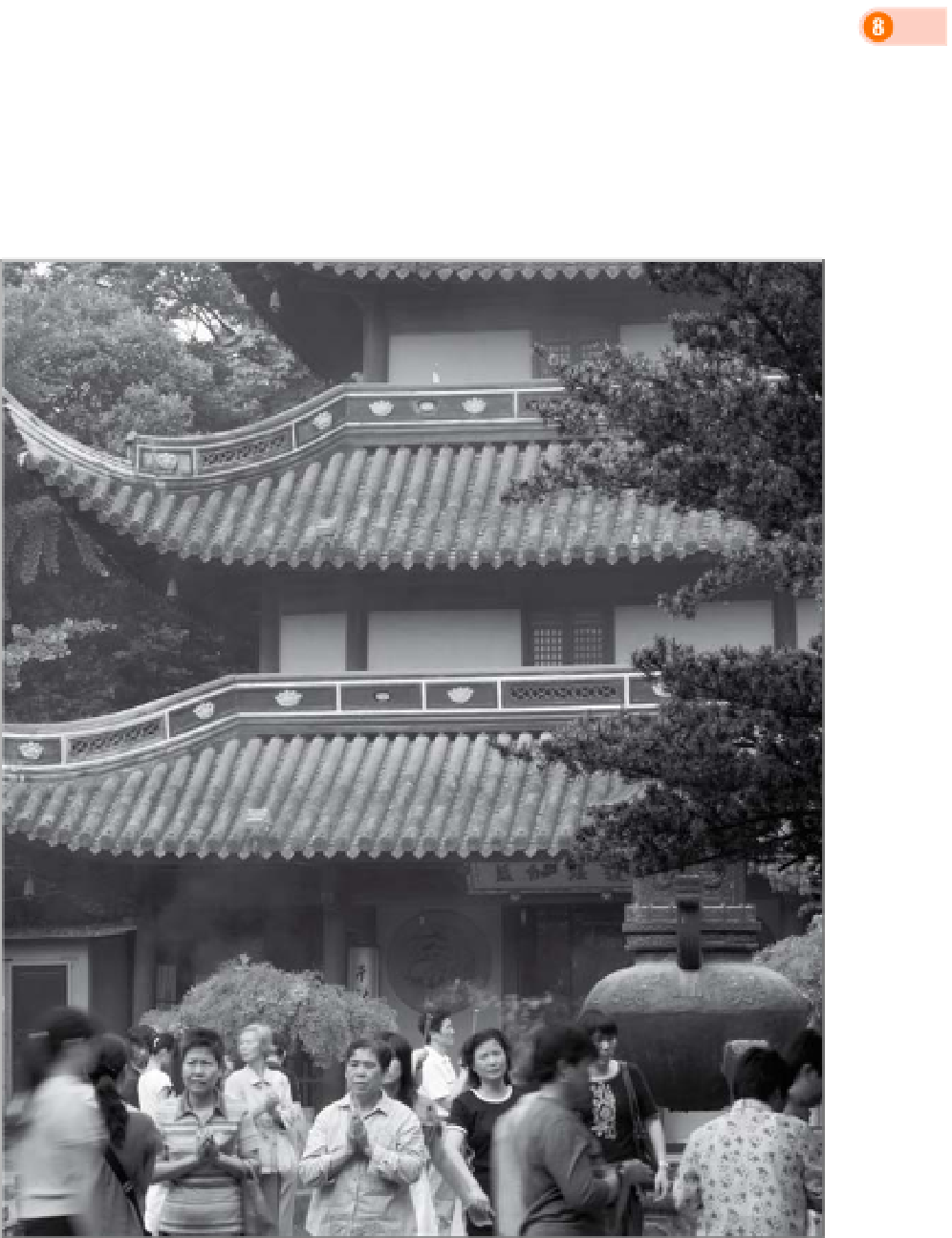Travel Reference
In-Depth Information
monks. There has been a temple on the site since the third century, and though
the present buildings are only around a century old, t he design and layout are
true to the original, comprising a complex of elegant multi-eaved halls. Pleas-
antly laid-back, t The temple sees many more devotees than day-trippers. The
temple is a must during Spring Festival (see p.29), when it hosts a huge and
boisterous fair. At this time, the temple bell, in the tower to the right of the
entrance, is banged 108 times, supposedly to ease the 108 “mundane worries”
of Buddhist thought. You can whack it yourself, anytime, for ¥10.
The temple's stand-out feature is its tenth-century
pagoda
, an octagonal,
forty-metre-high structure with seven brick storeys that are embellished with
wooden balconies and red-lacquer pillars. Until the feverish construction of
bank buildings along the Bund in the 1910s, it was the tallest edifice in
Shanghai. After a long period of neglect (Red Guards saw it as a convenient
structure to plaster with banners), an ambitious re-zoning project has spruced
up the pagoda and created the tea gardens, greenery and shop stalls that now
huddle around it.
99
Longhua Temple






